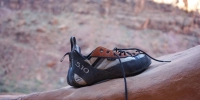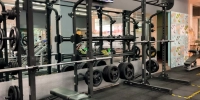How To Choose The Perfect Climbing Harness: Your Essential Guide

Choosing the right climbing harness is one of the most critical decisions you'll make as a climber. Your harness is your lifeline, connecting you securely to the rope, and its comfort and fit directly impact your performance and safety on the rock or in the gym. This guide will walk you through everything you need to know to select a harness that's perfect for your climbing style and body type.
Understanding the Different Types of Climbing Harnesses
Not all harnesses are created equal. Different climbing disciplines demand different features. Knowing the primary types will help you narrow down your choices:
-
Sit Harness (Standard Climbing Harness): This is the most common type, designed for versatility across various climbing activities like sport climbing, trad climbing, and gym climbing. It features a waist belt and two leg loops, offering a good balance of comfort, mobility, and gear-carrying capacity. They are lightweight yet robust, making them suitable for most climbers.
-
Chest Harness: Primarily used in conjunction with a sit harness, especially for children, individuals with less defined waists, or when carrying heavy loads (like on big wall climbs). A chest harness helps to keep the climber upright if they fall, reducing the risk of inversion. It's not designed to be used alone.
-
Full-Body Harness: Often seen in mountaineering, industrial settings, or for very young children. These harnesses offer maximum security by distributing impact force over a larger area of the body. While incredibly safe, they can be more restrictive and heavier than sit harnesses. For general recreational climbing, they are less common.
-
Specialized Harnesses:
-
Ice Climbing/Mixed Climbing Harnesses: These often feature adjustable or detachable leg loops that allow you to put them on or take them off while wearing skis or crampons. They also tend to have more robust gear loops for carrying ice screws and other winter-specific equipment.
-
Big Wall Harnesses: Designed for extended periods of hanging, these harnesses are heavily padded for comfort and feature numerous, sturdy gear loops for carrying large racks of equipment. Durability is a key consideration for these workhorses.
-
Determining the Right Size and Fit
A harness that doesn't fit properly is uncomfortable and, more importantly, unsafe. Follow these steps to ensure you get the perfect fit:
-
Measure Your Waist: While sizing charts provide a good starting point, always measure your waist and upper thigh circumference. Harness sizes vary between brands, so don't assume your pant size translates directly to harness size.
-
Consult Sizing Charts: Every manufacturer provides a detailed sizing chart. Compare your measurements to these charts to find the recommended size. If you're between sizes, it's generally better to try on both to see which offers a more secure and comfortable fit.
-
Try It On: This is non-negotiable. Wear the harness in the store over light climbing clothes. Cinch the waist belt so it sits snugly above your hip bones; you should be able to fit a flat hand between the harness and your waist, but not a clenched fist. The leg loops should be snug enough to prevent slipping but loose enough to allow full range of motion.
-
Test the Fit: While wearing the harness, try a few climbing-specific movements: high steps, squats, and even hang in it if possible (in a controlled environment, like a pro shop). This will reveal any pinch points or areas of discomfort. Ensure the belay loop is centered.
Evaluating Key Safety Features
Beyond fit, certain safety features are paramount. Always inspect these components carefully:
-
Buckles: Modern harnesses typically use "auto-locking" or "double-back" buckles, which are designed to prevent accidental loosening. Ensure all buckles are threaded correctly and lie flat against the webbing. Avoid older harnesses with single-pass buckles unless you are absolutely confident in your ability to thread them correctly every time.
-
Gear Loops: These are for carrying your quickdraws, carabiners, and other equipment. Consider how many gear loops you need based on your climbing style. For sport climbing, two to four are usually sufficient, while trad climbers might need five or more. Ensure they are strong and well-integrated into the harness design.
-
Tie-in Points: These are the two reinforced loops (one on the waist belt, one on the leg loops) through which you thread your rope. They are critical safety components and should be free of any fraying, cuts, or excessive wear. Always tie into both the waist belt and leg loop tie-in points.
-
Belay Loop: This is the strong, often distinct loop located at the front of the harness, used for attaching your belay device, personal anchor system (PAS), or rappelling device. Check for any signs of wear, especially near the stitching.
Conclusion
Choosing the right climbing harness is an investment in your safety and enjoyment. By understanding the different types, prioritizing proper fit, and meticulously checking safety features, you'll be well-equipped to make an informed decision. Don't rush the process; take your time, try on several options, and consult with experienced climbers or gear shop professionals. A well-chosen harness will serve you reliably for countless vertical adventures.
Frequently Asked Questions
What is the lifespan of a climbing harness?
The lifespan of a climbing harness depends on factors like frequency of use, exposure to harsh elements, and proper storage. Manufacturers typically recommend retiring a harness after 3-5 years, even with light use, and immediately if it shows any signs of significant wear, damage, or has been subjected to a major fall.
Can I use a climbing harness for activities other than climbing?
While climbing harnesses are designed specifically for climbing and mountaineering, some specialized harnesses might be suitable for activities like rescue operations or industrial work. However, for recreational use, it's best to stick to the intended purpose of the harness and avoid using it for activities it wasn't certified for.
How do I clean my climbing harness?
Clean your harness by hand-washing it in lukewarm water with a mild, non-detergent soap (like a gentle laundry soap designed for technical gear). Rinse thoroughly and hang it to air dry in a cool, shaded area away from direct sunlight or heat. Avoid machine washing or using harsh chemicals, which can damage the webbing and stitching.
Should a climbing harness feel tight?
A climbing harness should feel snug and secure, but not uncomfortably tight. The waist belt should sit above your hip bones and be tight enough that you can't pull it down past them. The leg loops should allow for full range of motion without pinching or feeling restrictive. If it feels too loose, it's a safety concern; if it's too tight, it will be uncomfortable and limit your movement.














